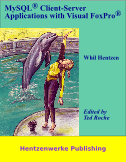The Central NH Linux User Group returns to the Library after a summer hiatus at the Sybase offices in Concord. The monthly meeting of CentraLUG, the Concord/Central NH GNHLUG chapter, happens the first Monday of most months at the New Hampshire Technical Institute‘s Library, room 146, at 7 PM. Next month’s meeting is on October 1st at 7 PM. Directions and maps are available at http://www.centralug.org Open to the public. Free admission. Tell your friends.
At this meeting, Michael Kazin will be presenting Nagios, the Open Source monitoring service. From http://www.nagios.org, “Nagios® is an Open Source host, service and network monitoring program.” Written in Perl and controlled by text configuration files, Nagios offers the ability to alert administrators to a huge number of possible problems with connectivity, speed, or performance. Nagios offers a web interface for close-to-real-time monitoring, email/pager alerts, the ability to launch other programs, etc.”
Michael is a computer consultant at a well-known consultancy working for well-known companies in the military-industrial complex. He is a member of the Greater New Hampshire Linux User Group’s Board of Directors. Previously, Michael helped run the Rutgers University Student Linux User Group and gained his experience with Nagios by monitoring hundreds of machines in the Rutgers Data Center.
Future Meetings: Currently, we have a couple interesting meetings coming up: November: Ted Roche on Cascading Style Sheets, December: David Berube on Ruby, January: Bruce Dawson on low-power Linux computers. As always, meetings are subject to change. You are encouraged to join the low-traffic announcement list to get announcement and cancellation information.
 Followers of the Hentzenwerke Publishing empire know that Whil Hentzen has the largest catalog of Visual FoxPro books and an impressive collection of books bridging the gap from the Windows world into the Linux/Free/Open Source world. Whil’s been working for quite some time to put together a book on working with VFP and back-end data servers other than SQL Server. I was one of the many community members who contributed comments, criticisms and ideas to the book, and was honored when Whil chose to designate me as technical editor. Whil Hentzen announces,
Followers of the Hentzenwerke Publishing empire know that Whil Hentzen has the largest catalog of Visual FoxPro books and an impressive collection of books bridging the gap from the Windows world into the Linux/Free/Open Source world. Whil’s been working for quite some time to put together a book on working with VFP and back-end data servers other than SQL Server. I was one of the many community members who contributed comments, criticisms and ideas to the book, and was honored when Whil chose to designate me as technical editor. Whil Hentzen announces,